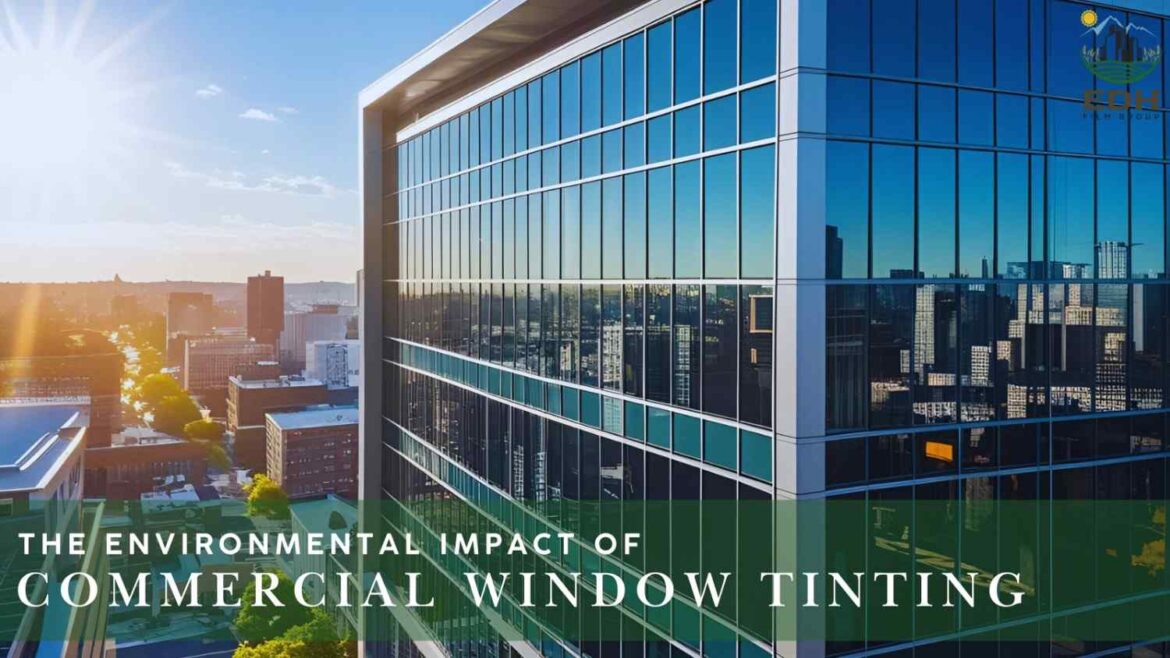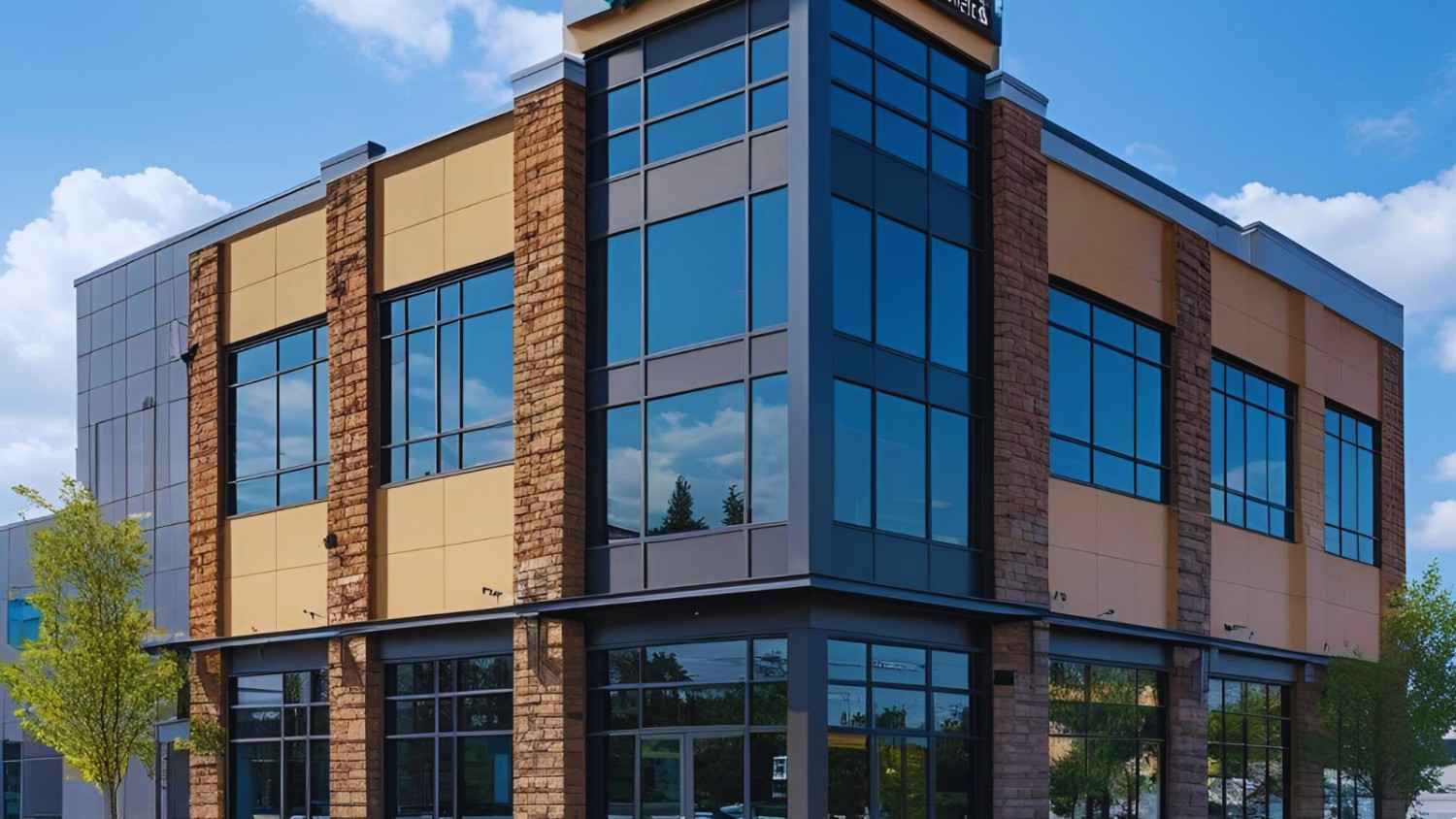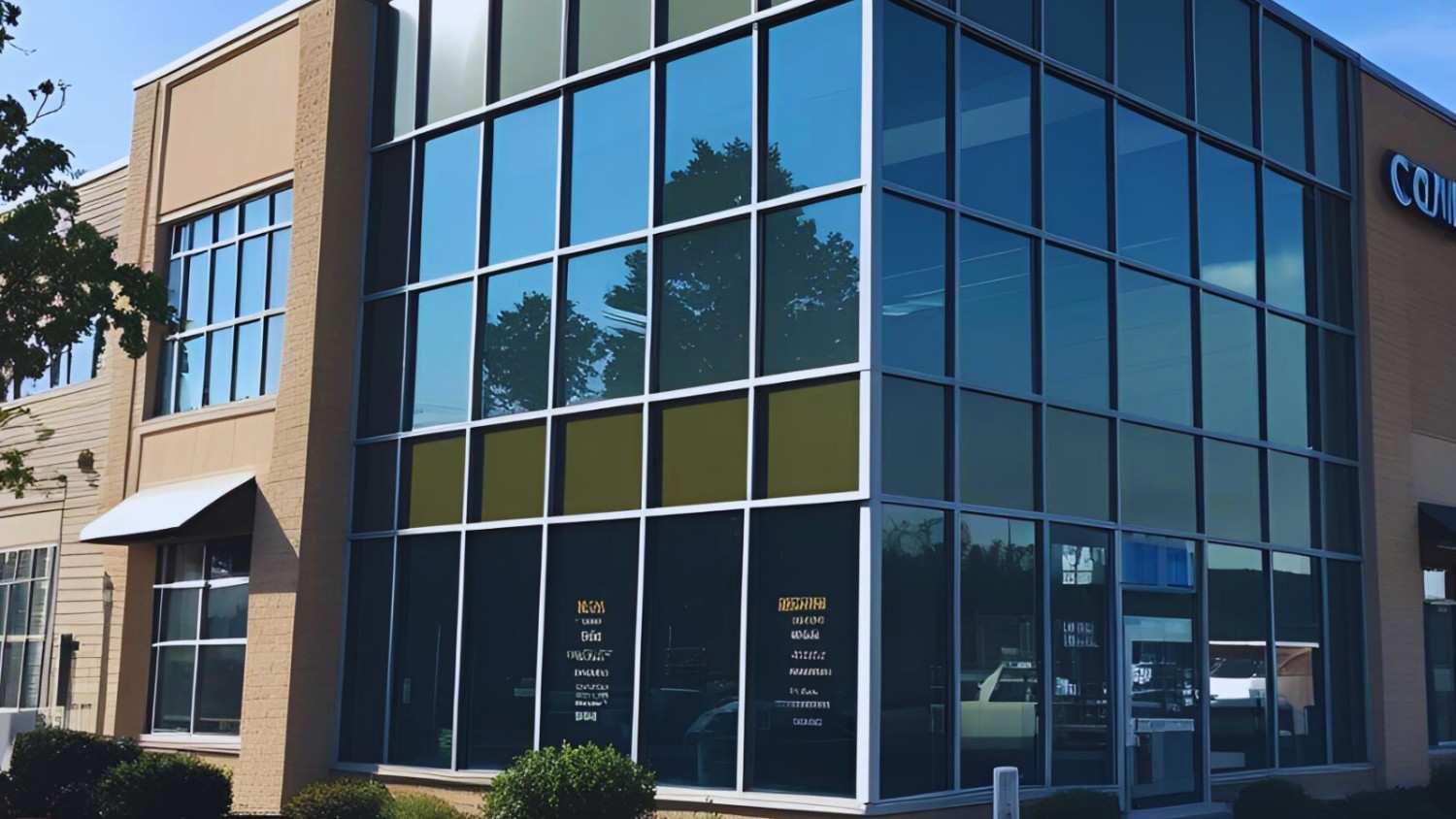Commercial buildings account for nearly 40% of total energy consumption in the U.S., placing pressure on property owners to adopt more sustainable practices. As demand for energy-efficient solutions grows, commercial window tinting provides an effective way to reduce energy consumption without costly renovations. These films help block solar heat gain, stabilize indoor temperatures and reduce the load on heating, ventilation and air conditioning (HVAC) systems. This results in lower utility bills and a smaller environmental footprint.
Beyond energy efficiency, commercial window tinting supports broader sustainability goals. By reducing carbon emissions, minimizing glare and protecting interior materials from UV damage, it enhances both environmental performance and occupant comfort. Property managers increasingly turn to window film as a wise investment that aligns with green building standards while improving long-term operational efficiency.
Optimizing Building Energy Performance
Energy efficiency stands as the primary environmental benefit of commercial window tint installations. Buildings equipped with high-performance films demonstrate significant reductions in energy consumption patterns compared to untreated glass surfaces. The thermal management properties of modern commercial window tinting systems create a more stable indoor environment while reducing the workload on mechanical cooling systems. These improvements directly translate into lower utility bills and a reduced environmental impact throughout the building’s operational lifecycle.
Reduced Heat Gain
Commercial solar window film blocks up to 79% of solar heat before it penetrates interior spaces, dramatically reducing the thermal load on air conditioning systems. Advanced ceramic and metallic technologies in these films reflect infrared radiation while maintaining visible light transmission, thereby creating comfortable environments that do not sacrifice natural illumination. The heat rejection capabilities of premium commercial window tint products prevent solar energy from warming interior surfaces, furniture and air, which would otherwise require additional cooling to maintain comfortable temperatures.
The infrared rejection properties of modern films operate through multiple mechanisms that work simultaneously to control heat transfer. Reflective particles embedded within the film structure bounce solar radiation back toward its source, while absorptive materials capture and dissipate the remaining energy before it reaches interior spaces. This dual-action approach ensures that commercial building window tinting delivers consistent performance across a range of varying weather conditions and sun angles throughout the year.
Lower Energy Consumption
Buildings with commercial window tinting typically experience 10-30% reductions in cooling costs during peak summer months, directly translating to decreased carbon emissions from power generation. The reduced demand for HVAC systems extends equipment lifespan while maintaining consistent comfort levels throughout occupied spaces. Window tinting for business applications often achieves payback periods of 2-5 years through energy savings alone, making these installations financially attractive while supporting environmental goals.
The cumulative effect of reduced energy consumption becomes particularly significant when applied across multiple commercial properties or large building portfolios. Property owners who implement commercial solar window film across their holdings often report substantial reductions in overall energy usage, contributing to corporate sustainability goals and regulatory compliance requirements. These improvements support broader environmental initiatives while demonstrating measurable progress toward carbon neutrality objectives.
ALSO READ: The Business Benefits of Commercial Window Tinting: Security, Privacy and Style
Enhancing Indoor Environmental Quality
Indoor environmental quality has a direct impact on occupant productivity, comfort and health while also influencing the environmental performance of commercial buildings. Commercial window tinting systems contribute to superior indoor conditions by managing solar radiation, reducing glare and protecting against harmful ultraviolet exposure. The controlled environment created by professional window tinting installations minimizes the need for artificial lighting during daylight hours while maintaining comfortable conditions for building occupants. These improvements support both human wellness and environmental sustainability by reducing energy consumption and enhancing building performance.
Superior UV Protection
Commercial window tint blocks up to 99% of harmful ultraviolet radiation, protecting interior furnishings, flooring and artwork from fading and degradation. This protection extends the useful life of carpets, upholstery and other interior materials, reducing the frequency and associated waste generation. The UV filtering properties of commercial building window tinting prevent photochemical reactions that cause materials to break down, maintaining interior aesthetics while reducing the environmental impact of frequent replacements.
The preservation of interior materials through UV protection represents a significant but often overlooked environmental benefit of window tinting for business applications. Furniture, flooring and decorative elements protected from UV exposure maintain their appearance and structural integrity for extended periods, reducing the demand for replacement materials and associated manufacturing processes. This protection contributes to circular economy principles by extending product life cycles and reducing waste streams.
Glare and Comfort Management
Commercial window tinting reduces disruptive glare on computer screens and work surfaces by up to 87%, enhancing occupant comfort and productivity while reducing the need for adjustments to artificial lighting. The controlled light transmission properties of modern films allow natural daylight to illuminate interior spaces without creating uncomfortable viewing conditions. This balance between natural light utilization and glare control enables buildings to maximize daylight harvesting strategies while maintaining optimal working conditions.
The glare reduction capabilities of commercial solar window film enable building occupants to work comfortably near windows throughout the day, reducing the need for window coverings and artificial lighting. This improved utilization of natural light contributes to energy savings while creating more pleasant working environments. The enhanced comfort levels achieved through professional commercial window tinting installations often lead to increased productivity and reduced absenteeism, supporting both business objectives and environmental goals.
ALSO READ: Beauty Meets Functionality: The Transformative Power of Decorative Window Film
Promoting Material Sustainability
Commercial window tinting contributes to material sustainability by extending the lifespan of interior building components and reducing the frequency of replacements. The protective properties of modern films create barriers against environmental factors that cause premature deterioration of furniture, flooring and architectural elements. Window tinting for business applications supports circular economy principles by maximizing the useful life of existing materials while reducing waste generation. These benefits extend beyond immediate cost savings to encompass broader environmental impacts associated with manufacturing, transportation and disposal of building materials.
Extended Surface Lifespan
Commercial building window tinting prevents UV-induced fading and heat damage that typically shortens the lifespan of interior surfaces by 50% or more. Flooring materials, particularly hardwood and luxury vinyl, maintain their appearance and structural integrity significantly longer when protected from solar radiation. The preservation of interior finishes through commercial window tint installations reduces the frequency of renovations and associated construction waste, supporting sustainable building practices.
The protective benefits extend to all interior materials exposed to solar radiation, including artwork, signage and architectural details. Commercial solar window film creates a controlled environment that prevents thermal stress and photochemical degradation, maintaining the aesthetic and functional properties of interior elements. This protection reduces the environmental impact associated with manufacturing replacement materials and disposing of deteriorated components.
Mindful Material Choices
High-performance commercial window tinting has evolved to support sustainability goals without compromising function. Leading products such as the 3M™ Prestige™ and 3M™ All Season series are engineered with low-VOC (volatile organic compound) formulations that promote healthier indoor air quality, an increasingly important consideration in today’s commercial environments. These advanced films contribute to green building initiatives and may help projects earn LEED certification points.
Sustainability also extends to the production methods used in making these films. Many premium solar control window film options are manufactured using recyclable materials and reduced packaging waste. Designed with full lifecycle impact in mind, these products offer long-term environmental benefits, from installation through to disposal. Selecting environmentally responsible window tinting solutions enables commercial properties to reduce energy consumption, minimize waste and align with broader ESG objectives, while also enhancing building performance.
Contributing to Broader Green Initiatives
Commercial window tinting supports comprehensive environmental strategies that extend beyond individual building performance to encompass community-wide sustainability goals. The cumulative effect of widespread window tinting for business adoption contributes to reduced urban heat island effects and decreased regional energy demand. These installations align with municipal sustainability plans and corporate environmental responsibility programs while delivering measurable performance improvements. The environmental benefits of commercial window tinting systems support broader initiatives aimed at reducing greenhouse gas emissions and promoting sustainable development practices.
Decreased Carbon Emissions
The energy savings achieved through commercial solar window film installations directly reduce greenhouse gas emissions from power generation, with typical buildings experiencing reductions of 5-15% in their overall carbon footprint. These improvements contribute to corporate sustainability reporting requirements while supporting climate action goals at local and regional levels. The cumulative impact of multiple commercial building window tinting projects creates measurable progress toward carbon reduction objectives across building portfolios.
The carbon emission reductions achieved through window tinting installations compound over time as buildings continue to operate more efficiently year after year. Property owners who implement comprehensive commercial window tint programs often report substantial progress toward net-zero emissions goals, particularly when combined with other energy efficiency measures. These improvements support regulatory compliance requirements while demonstrating corporate commitment to environmental stewardship.
Supporting Green Building Goals
Commercial window tinting contributes valuable points toward LEED certification and other green building rating systems through energy performance improvements and material sustainability criteria. The integration of high-performance films helps buildings achieve higher certification levels while reducing operational costs and environmental impact. Window tinting for business applications supports multiple credit categories within green building frameworks, including energy optimization, indoor environmental quality and materials selection.
Aligning commercial building window tinting with established green building standards provides property owners with third-party validation of their environmental investments, offering assurance that their sustainability efforts are recognized and supported. These certifications enhance property values while supporting corporate sustainability reporting requirements and stakeholder expectations. The comprehensive benefits of commercial solar window film installations often exceed the specific requirements for green building points, delivering additional value through improved building performance and occupant satisfaction.
Partnering for Excellence in Sustainability
Effective commercial window tinting starts with choosing the right materials and an experienced team. Proper film selection and professional installation are crucial for maximizing energy efficiency, minimizing carbon footprint and ensuring long-term performance without compromising the appearance or functionality of your property.
With over 75 years of combined experience, our team delivers tailored window tinting solutions backed by industry-leading 3M™ technologies. From energy analysis to expert installation, we help businesses reduce operational costs while meeting sustainability goals. Contact EDH Film Group today for a complimentary quote and see how smart window film investments can drive lasting environmental and financial value.




